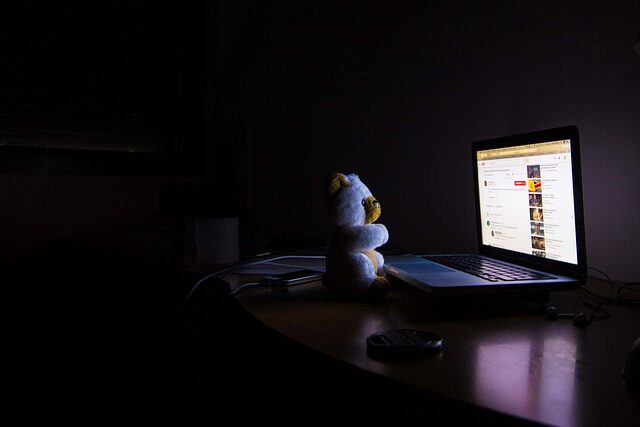Choosing Between Lunesta vs. Ambien for Insomnia: A Short-Term Treatment Guide

When it comes to managing insomnia, two common medications often considered are Lunesta (eszopiclone) and Ambien (zolpidem). Both drugs are classified as sedative-hypnotics and are used for short-term relief of sleeplessness, offering different benefits and drawbacks. This article aims to compare Lunesta vs. Ambien: Two Short-Term Treatments for Insomnia, helping you and your healthcare provider decide which might be best for you.
- Lunesta Vs. Ambien: Which Is Better for Insomnia?
- What Are the Main Differences between Lunesta and Ambien?
- Is Lunesta or Ambien More Effective for Insomnia?
- Conditions Treated by Lunesta and Ambien
- What Are the Common Side Effects of Lunesta and Ambien?
- How Do Drug Interactions Affect Lunesta and Ambien?
- How to Talk to Your Doctor About Lunesta Vs. Ambien?
- What Are the Costs and Coverage Options for Lunesta and Ambien?
- Choosing Between Lunesta vs. Ambien for Insomnia: A Short-Term Treatment Guide
- Exploring Alternative Treatments for Insomnia Beyond Lunesta and Ambien
- Questions Related to Lunesta Vs. Ambien for Insomnia
Lunesta Vs. Ambien: Which Is Better for Insomnia?
Lunesta and Ambien are both FDA-approved for the treatment of insomnia, but they have unique profiles. Lunesta is renowned for its longer-lasting effects, which can be advantageous for those who struggle with staying asleep. On the other hand, Ambien is recognized for its quick onset of action, ideal for those who have difficulty falling asleep.
Choosing between them depends on various factors, including individual response to medication, the severity of insomnia, and personal health history. Both medications have potential side effects and risk for dependency, so it's crucial to consult a healthcare provider for a personalized recommendation.
The effectiveness of these medications can vary from person to person, and while some may find Lunesta to be more effective due to its longer duration, others may prefer the quicker action of Ambien.
What Are the Main Differences between Lunesta and Ambien?
Lunesta contains eszopiclone, while Ambien contains zolpidem. Not only do they differ in chemical composition, but they also have different durations of action. Lunesta is often chosen for its extended effect, which can provide relief for those needing sustained aid to maintain sleep throughout the night.
Ambien, available in both immediate-release and extended-release forms, has flexibility in helping patients fall asleep or stay asleep, depending on the formulation used. For example, the extended-release version, Ambien CR, offers a dual-layer tablet that helps fall and stay asleep.
Understanding the dosage differences between Lunesta and Ambien is also pivotal. Lunesta is typically started at a 1 mg dose, whereas Ambien dosages begin at 5 mg for the immediate-release form and 6.25 mg for the extended-release form.
Is Lunesta or Ambien More Effective for Insomnia?
Effectiveness can be subjective and varies based on individual needs. In some studies, patients reported feeling more rested after using Lunesta due to its longer half-life. However, others prefer Ambien for its faster action.
One key to effectiveness is how to make Lunesta work better for you or optimizing the use of Ambien. Factors such as timing of the dose, avoiding certain foods or drinks, and establishing a regular sleep routine can all influence how well these medications work.
The best approach is a personalized one. Discussion with a healthcare professional can help determine the most appropriate option based on a comprehensive assessment of insomnia and overall health.

Conditions Treated by Lunesta and Ambien
Both Lunesta and Ambien are primarily prescribed for short-term treatment of insomnia, characterized by difficulty falling or staying asleep. They are particularly useful in acute episodes of insomnia, often caused by temporary stressors or changes in sleep environment.
However, they are not typically recommended for long-term use due to risks of dependency and tolerance. For chronic insomnia, other treatment strategies such as cognitive-behavioral therapy (CBT) for insomnia may be explored.
What Are the Common Side Effects of Lunesta and Ambien?
The side effects of Lunesta and Ambien may include dizziness, headache, and daytime drowsiness. Both medications can also cause complex sleep behaviors like sleepwalking, which can be dangerous.
Rare but serious risks include memory loss and engaging in activities while not fully awake, such as driving. Alcohol can exacerbate these side effects and should be avoided.
It's essential to talk to a doctor about potential side effects and monitor your reaction to the medication, particularly when starting treatment or adjusting dosage.
How Do Drug Interactions Affect Lunesta and Ambien?
Drug interactions can significantly impact the effectiveness and safety of Lunesta and Ambien. For instance, combining either drug with other central nervous system depressants can increase the risk of respiratory depression and sedation.
Some antidepressants, antifungal medications, and antibiotics can also affect the metabolism of these sleep aids, either intensifying or diminishing their effects. Always disclose all medications and supplements you are taking to your healthcare provider.
How to Talk to Your Doctor About Lunesta Vs. Ambien?
When discussing insomnia treatments with your doctor, express your sleep concerns and any past experiences with sleep aids. Be honest about your sleep habits, any other medications you're taking, and your expectations for treatment.
Your doctor will assess your overall health, potential risk factors, and history of insomnia to make the best recommendation. They might also discuss alternating between Lunesta and Ambien: is it safe? or should one be used exclusively.

What Are the Costs and Coverage Options for Lunesta and Ambien?
Costs for Lunesta and Ambien can vary widely, with or without insurance. On average, without insurance, Lunesta may cost around $586, whereas Ambien might be around $724.
Coverage options depend on your insurance plan, but many providers require a prior authorization for these medications. Generic versions of both drugs are available, which can help reduce out-of-pocket costs.
Exploring alternative treatments for insomnia beyond Lunesta and Ambien is also worth discussing with your healthcare provider, as they may suggest more cost-effective or long-term solutions.
Choosing Between Lunesta vs. Ambien for Insomnia: A Short-Term Treatment Guide
When choosing between Lunesta and Ambien, consider the understanding the dosage differences between Lunesta and Ambien, as well as the duration of effects, and side effect profiles. Your doctor can help navigate these considerations to find the most appropriate treatment for your insomnia.
Remember, while these medications can be effective for short-term use, they should be part of a larger treatment plan that may include lifestyle changes, therapy, and, if necessary, alternative or complementary treatments.
Exploring Alternative Treatments for Insomnia Beyond Lunesta and Ambien
Exploring alternative treatments for insomnia beyond pharmacological solutions is essential. Behavioral therapies, relaxation techniques, and improving sleep hygiene can be effective and have no risk of medication side effects or dependency.
Supplements such as melatonin or valerian root may also be options, although they should be used under the guidance of a healthcare provider.
Ultimately, the goal is to find sustainable strategies that address the underlying causes of insomnia and promote long-term sleep health.
Which is better for insomnia, Lunesta or Ambien?
Whether Lunesta or Ambien is better for a particular individual with insomnia depends on their specific sleep challenges, health profile, and how they respond to each medication. Both have been shown to be effective, but the choice must be tailored to the individual.

Discussing options with a healthcare provider, who can consider the full scope of your insomnia and health history, is the most reliable way to determine which medication is more suitable for you.
Which drug is the first choice for treatment of short-term insomnia?
There is no one-size-fits-all first-choice drug for short-term treatment of insomnia. Both Lunesta and Ambien are commonly prescribed and effective options. The choice between them will depend on individual needs, preferences, and medical advice.
Some patients may start with one medication and then switch to the other if the first is not effective or causes side effects. The decision should always be made in consultation with a healthcare provider.
What is the number one medication for insomnia?
There is no definitive "number one" medication for insomnia as treatment is highly individualized. Both Lunesta and Ambien are leading options among prescription medications for their efficacy in initiating and maintaining sleep.
The best medication for any individual depends on their specific sleep issues, health status, and how they respond to treatment.
Can I take Ambien one night and Lunesta the next night?
Alternating between Ambien and Lunesta without medical advice is not recommended as it can affect how each drug works and increase the risk of side effects. Always use medication as prescribed by your healthcare provider, and discuss any changes to your treatment plan with them.
Consistency is key in treating insomnia, and your doctor can provide guidance on the safest and most effective way to use sleep medications.
Choosing the right medication for insomnia can be a complex process, but understanding the differences and similarities between Lunesta vs. Ambien: Two Short-Term Treatments for Insomnia is a vital first step. Consult with your healthcare provider to determine the best treatment strategy for your needs.

Leave a Reply